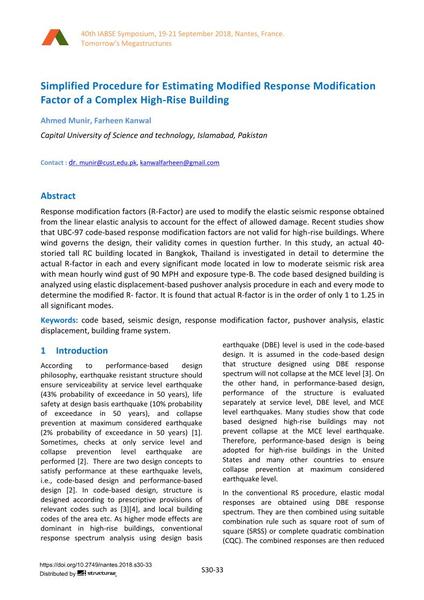Simplified Procedure for Estimating Modified Response Modification Factor of a Complex High-Rise Building

|
|
|||||||||||
Détails bibliographiques
| Auteur(s): |
Ahmed Munir
(Capital University of Science and technology, Islamabad, Pakistan)
Farheen Kanwal (Capital University of Science and technology, Islamabad, Pakistan) |
||||
|---|---|---|---|---|---|
| Médium: | papier de conférence | ||||
| Langue(s): | anglais | ||||
| Conférence: | IABSE Symposium: Tomorrow’s Megastructures, Nantes, France, 19-21 September 2018 | ||||
| Publié dans: | IABSE Symposium Nantes 2018 | ||||
|
|||||
| Page(s): | S30-33 | ||||
| Nombre total de pages (du PDF): | 7 | ||||
| DOI: | 10.2749/nantes.2018.s30-33 | ||||
| Abstrait: |
Response modification factors (R-Factor) are used to modify the elastic seismic response obtained from the linear elastic analysis to account for the effect of allowed damage. Recent studies show that UBC-97 code-based response modification factors are not valid for high-rise buildings. Where wind governs the design, their validity comes in question further. In this study, an actual 40- storied tall RC building located in Bangkok, Thailand is investigated in detail to determine the actual R-factor in each and every significant mode located in low to moderate seismic risk area with mean hourly wind gust of 90 MPH and exposure type-B. The code based designed building is analyzed using elastic displacement-based pushover analysis procedure in each and every mode to determine the modified R- factor. It is found that actual R-factor is in the order of only 1 to 1.25 in all significant modes. |
||||
| Mots-clé: |
conception sismique
|
||||
